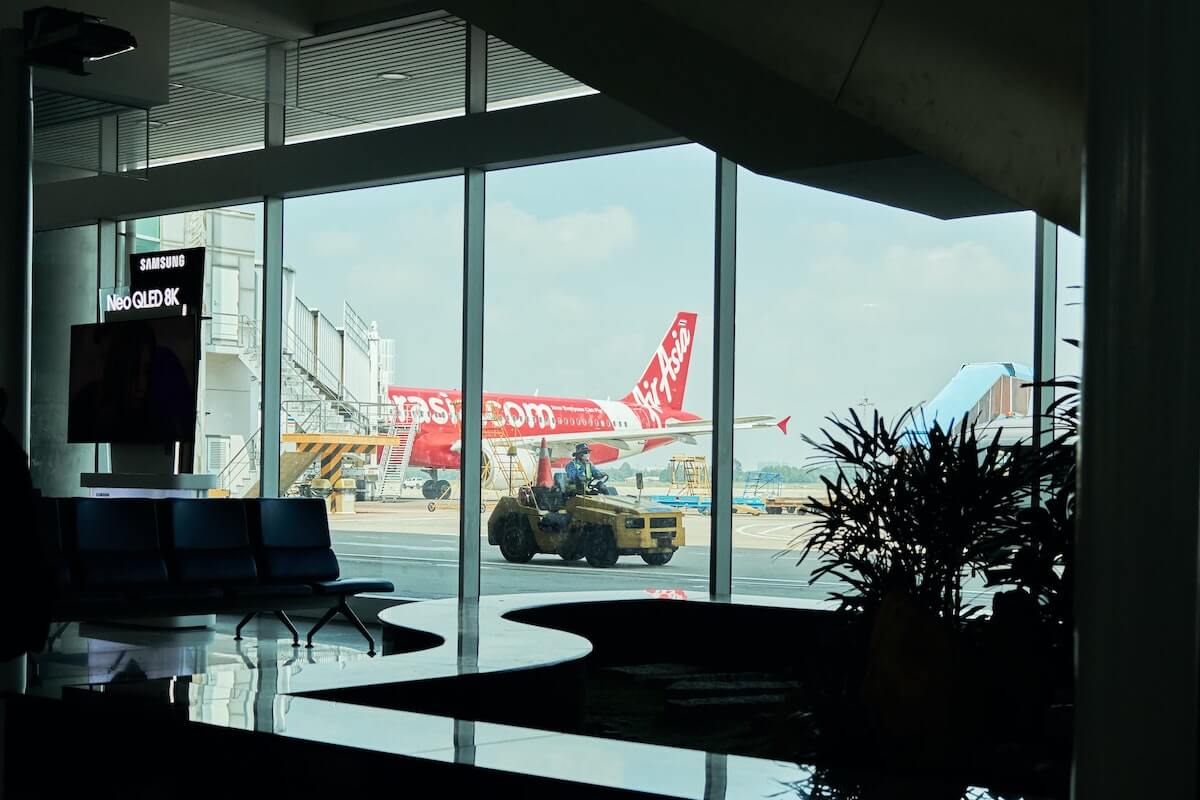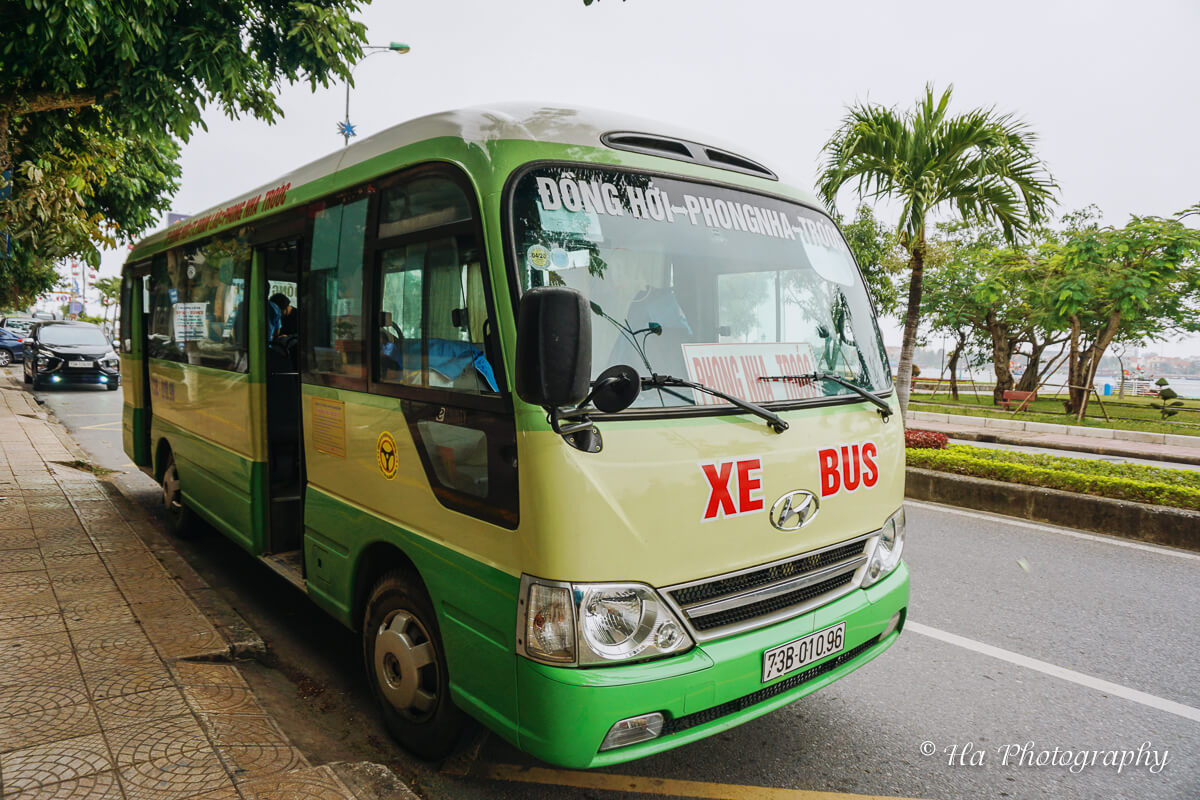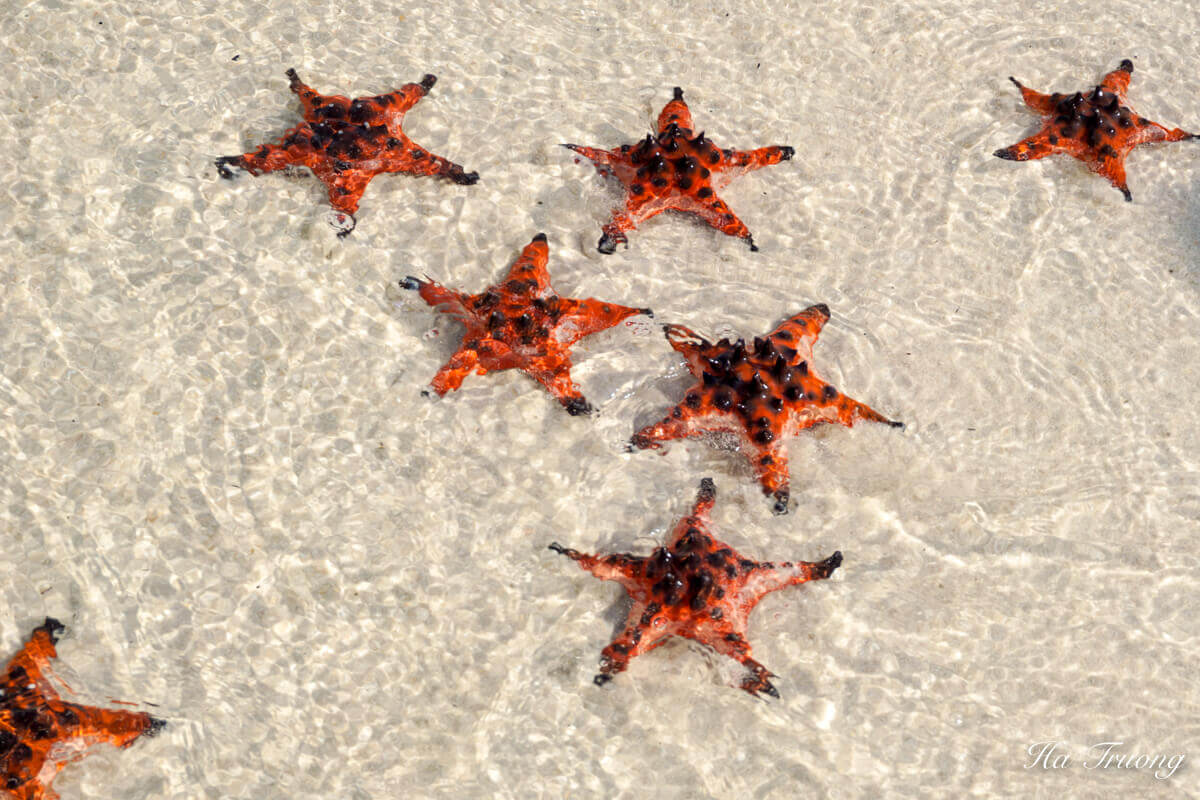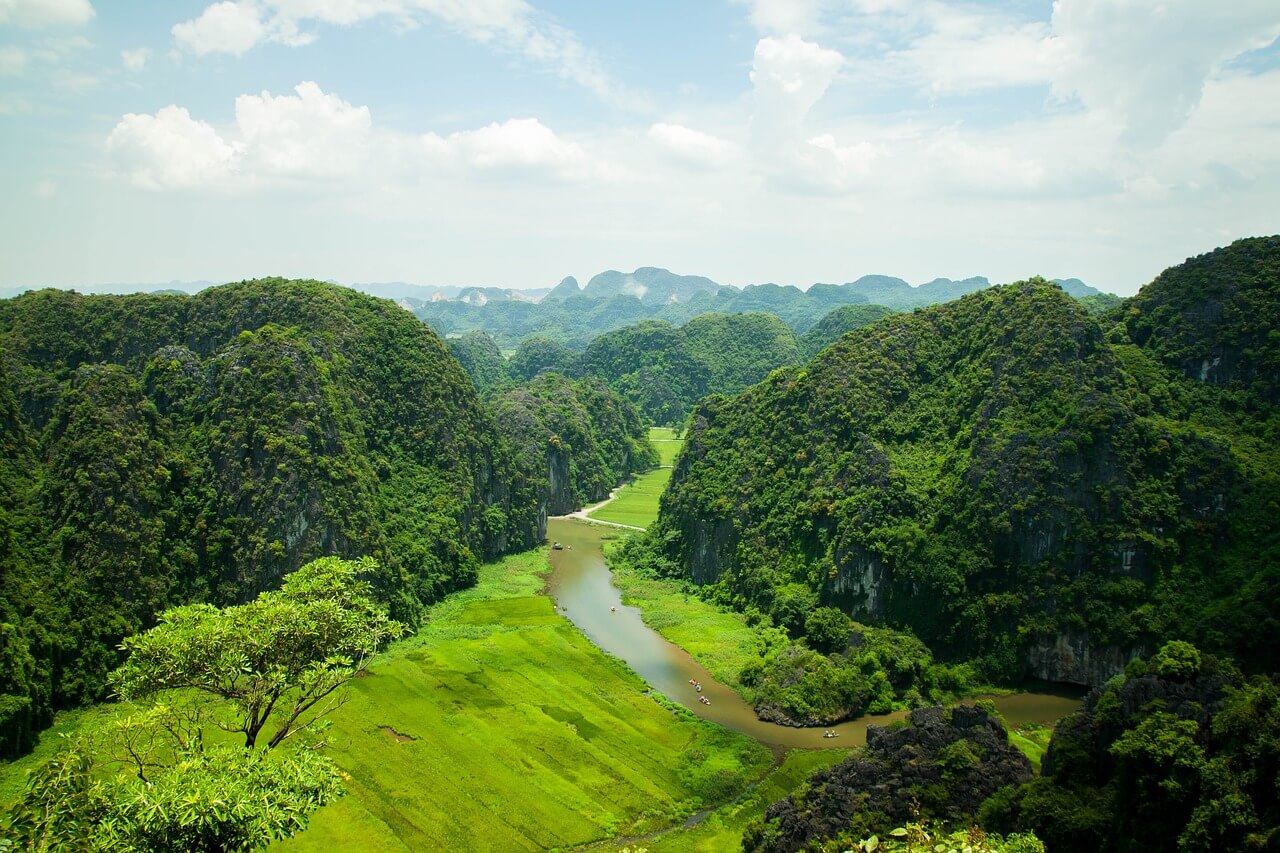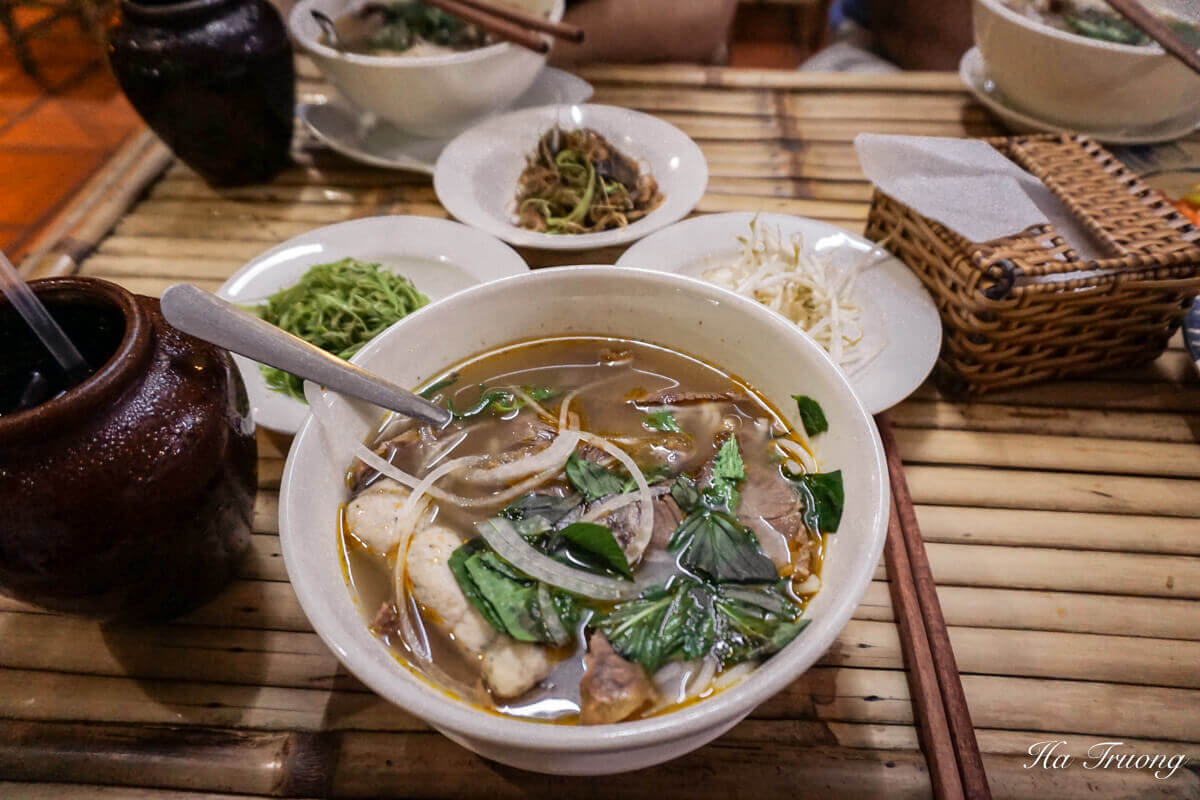Thang Long Imperial Citadel: Hanoi Historical Landmark
If you’ve been searching for the perfect blend of history, culture, and architecture in Hanoi, you’ve likely stumbled upon mentions of the Thang Long Imperial Citadel.
This ancient fortress, with its sprawling courtyards and remnants of bygone eras, feels like a living museum capturing Vietnam’s history.
In this guide, I share useful information about Thang Long Citadel, so you can plan your trip better!
Quick facts
Before getting into the history and things to see, here’s some information about Hanoi Citadel.
Where is Thang Long Imperial Citadel?
Nestled near Hanoi Old Quarter, Thang Long Citadel’s area stretches across an impressive 18.3 hectares (183,000 square meters).
The address is 19C Hoang Dieu, Hanoi.

Opening Hours:
Thang Long Citadel welcomes visitors almost every day of the week. Specifically:
- Open: Tuesday to Sunday
- Time: 8 am to 5 pm
- Closed: Mondays
Tip: Given its expansive grounds, consider allocating either a full morning or afternoon for your exploration.
Ticket Prices:
Visiting this historic gem is both enriching and affordable:
- Adults: 30,000 VND
- Students (with ID) & Seniors (60+): 15,000 VND
- Children under 15: Free
Thang Long Citadel History
Thang Long Imperial Citadel began its story in the 7th century, thanks to the visionaries of the Dinh-Tien Le dynasties.
In 1010, a significant shift occurred. King Ly Thai To moved the capital from Hoa Lu to Dai La, and gave it a fresh identity: Hanoi.
Over centuries, the Ly, Tran, Le, and Nguyen dynasties further shaped its destiny.
Hanoi didn’t just grow; it blossomed, becoming the heart of Vietnam’s economic, cultural, and political landscape.

The Thang Long Citadel was more than just walls and towers.
It was where the king and his family resided, made landmark decisions, and marked the country’s achievements.
But as time went on, especially when the Nguyen Dynasty decided to move the capital to Hue in 1802, the Citadel’s prominence shifted a bit.
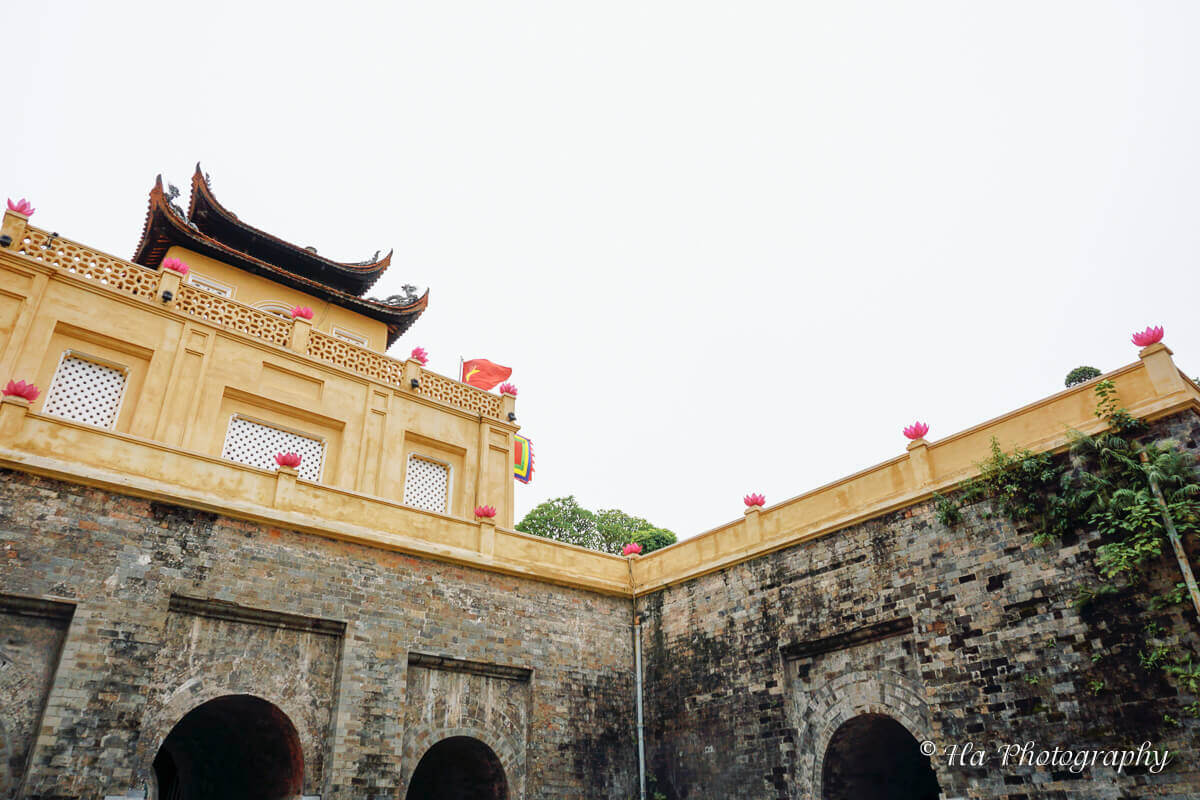
It was occupied by the French, and many original structures were destroyed.
From 1954, Thang Long Imperial Citadel took on a different role, serving as a hub for defense strategies, particularly during the Vietnam War.
Though time and conflicts have altered its face, remnants like the Doan Mon Gate and Kinh Thien Palace still stand as testaments to its past glory.
And a little interesting fact: in 2010, this Citadel secured its spot on UNESCO’s World Cultural Heritage list. A well-deserved recognition, I’d say!
Things to see at Thang Long Imperial Citadel
Doan Mon (Main gate)
The Doan Mon is more than just a relic—it’s a passage through time.
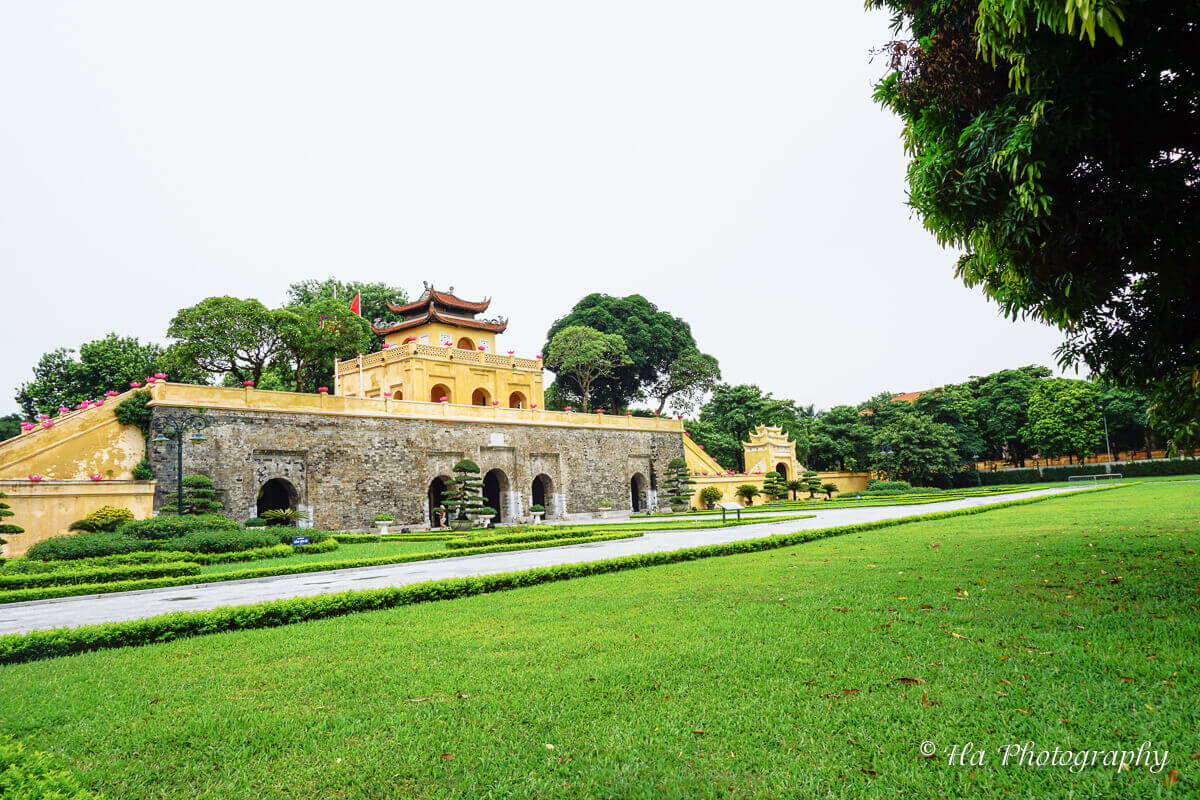
Made primarily from bricks, its five beautifully arched stone gates once were silent witnesses to royal processions.
The central door, standing at a regal 4 meters, was reserved for the king, symbolizing his stature.

When you’re here, take a moment to soak in the aura. You’re walking on the same path that ancient royals once trod!
For an added experience, come during dawn when the crowds are sparse, and the soft sunlight bathes the gate in a golden hue.
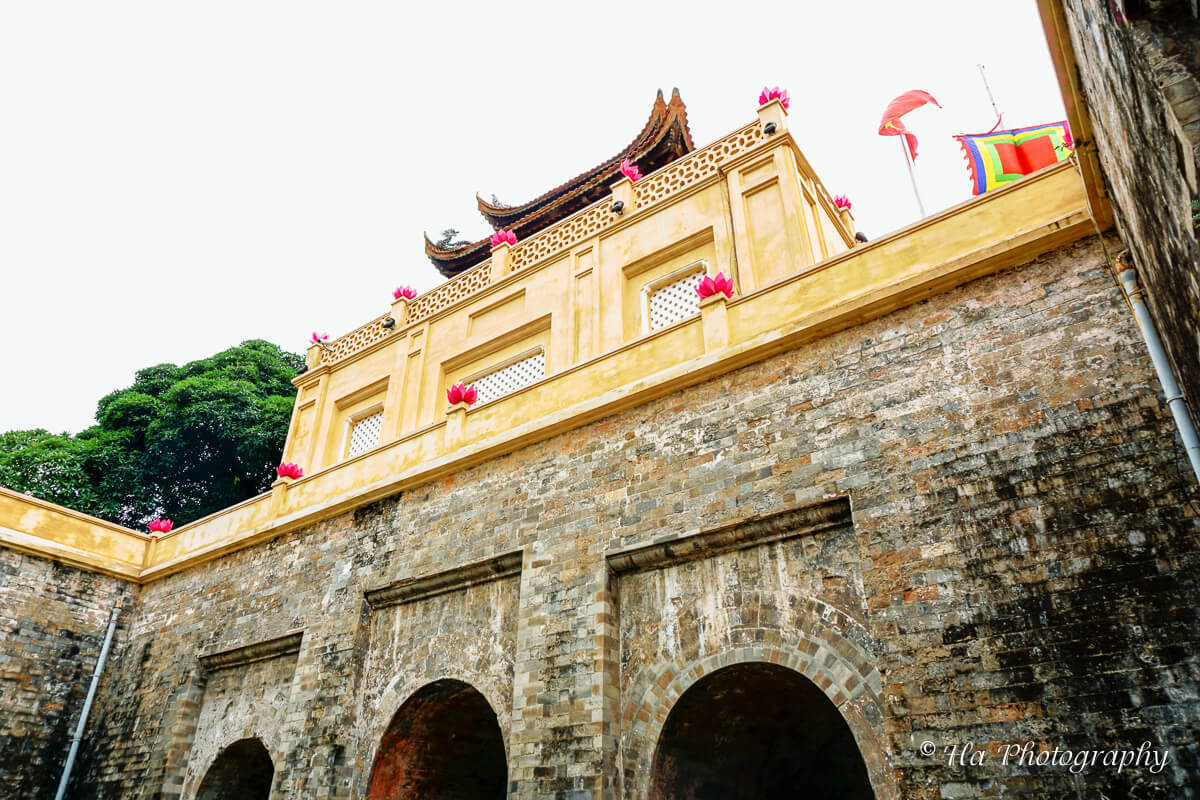
Chinh Bac Mon (Main Northern Gate)
Originating from the Nguyen Dynasty, Chinh Bac Mon Gate measures an impressive 8.71 meters in height.
Historically, it played a critical role in the Citadel’s defense strategy.

While the gate stands still, the stories it could tell of battles and victories would be tumultuous.
Visiting late afternoon? The lowering sun casts dramatic shadows, highlighting the intricate design details—perfect for those photos that’ll make your friends wish they were there.
Kinh Thien palace
Built in 1418, the once-majestic Kinh Thien Palace has witnessed dynasties rise and fall.
In 1886, this palace was destroyed by the French colonialists to build the French Army Artillery Command.

However, you can still see the remaining architecture of old stone foundations and steps to reach the main hall.
The highlight of this relic is the two stone dragons adoring on the porch.
They were sculpted from the 15th century under the reign of King Le Thanh Tong, representing the architectural style of the Tien Le Dynasty.

Hau Lau
Built in 1821, Hau Lau, or the “Behind the Palace”, is where stories of palace intrigues and forbidden romances might have unfolded.
At the end of the 19th century, Hau Lau was severely damaged, and the French colonialists had it renovated and rebuilt as it is today.

Today, its tranquility offers a contrast to Hanoi’s usual bustle.
If you’re looking for a quiet moment, the garden north of Hau Lau, fragrant with blossoms of local flowers, is a serene haven often missed by the usual tourist crowd.
Hanoi flag tower
The Hanoi Flag Tower is a testament to Vietnam’s resilient spirit. At 60m, it oversees Hanoi, marrying the city’s past and present.

The tower was built in the early 19th century under the Nguyen Dynasty.
It’s one of the rare landmarks in the Citadel that the French didn’t destroy between 1894 and 1897.
Archaeological site 18 Hoang Dieu
For history enthusiasts, Site 18 Hoang Dieu offers a glimpse into Vietnam’s past.
With artifacts ranging from local terracottas to wooden columns, it’s a journey through time.

You can also see ceramics from Vietnamese feudal dynasties and foreign utensils and items, such as porcelain from West Asia, China, and Japan.

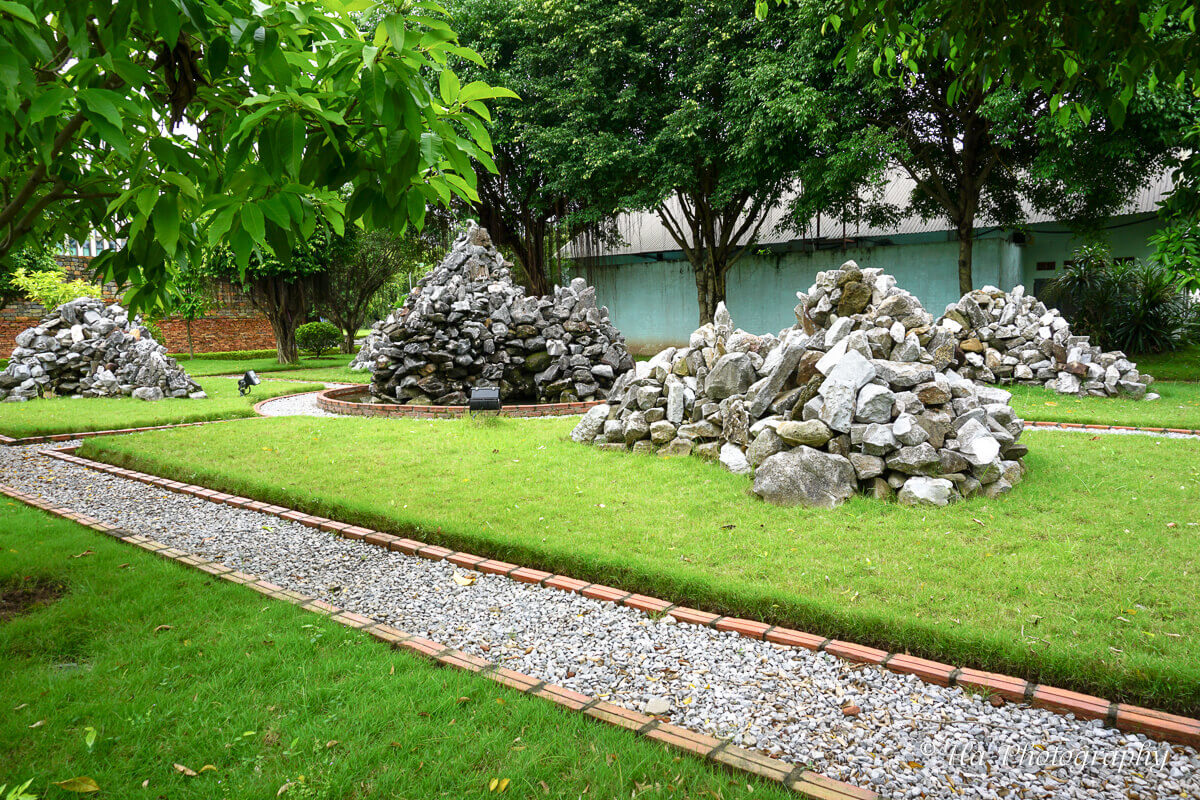
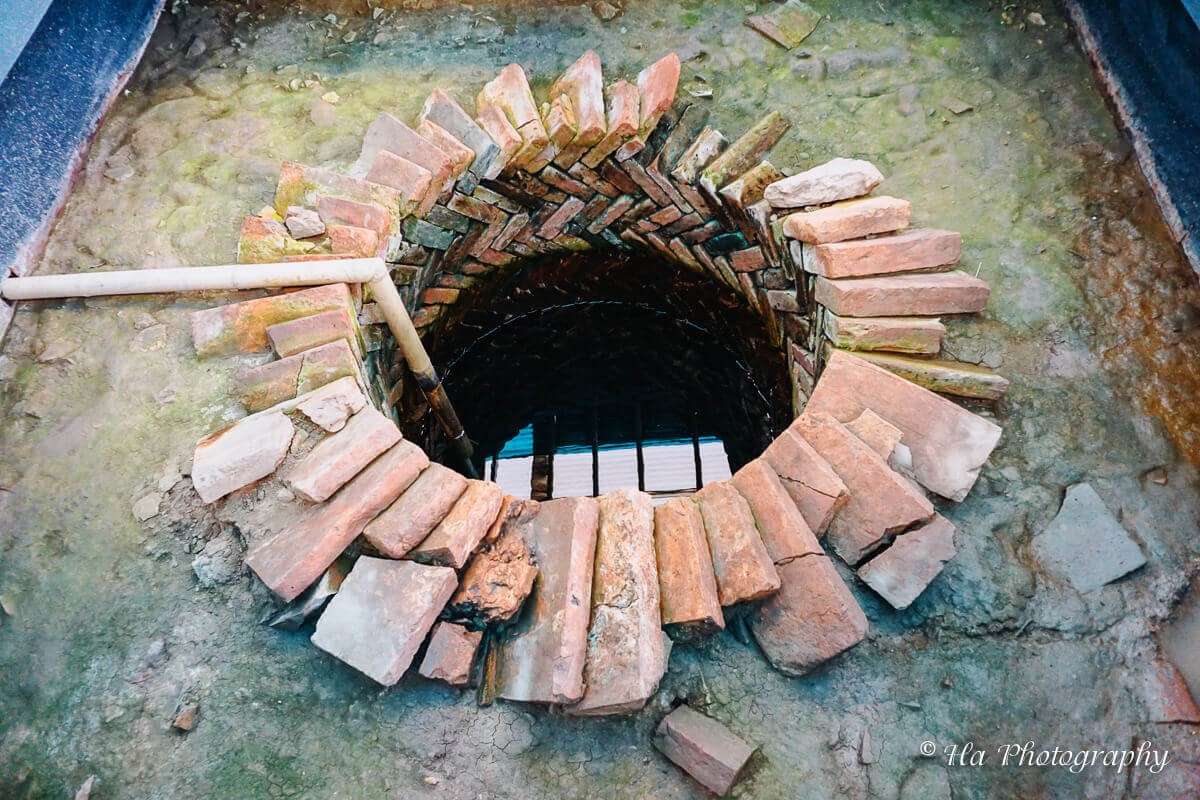
How to get to Thang Long Imperial Citadel
It’s easy to get to Thang Long Imperial Citadel:
- By Bus: Opt for Route 22 (Gia Lam Bus Station – 103 Hospital). This route stops right in front of the Citadel’s entrance.
- Taxis & Rideshares: Services like Grab are incredibly efficient. Simply set your destination to “Thang Long Imperial Citadel.”
- Walking: If you’re near the city center, it’s a scenic walk. Direct yourself via Trang Thi -> Dien Bien Phu -> Nguyen Tri Phuong -> Hoang Dieu.
Tip: If you choose to walk, use Google Maps. Hanoi’s charming streets can be a delightful maze!
Places to visit near Thang Long Imperial Citadel
After your trip to Thang Long Citadel, don’t miss these places nearby.
- Ho Chi Minh Mausoleum – The final resting place of Ho Chi Minh, surrounded by beautiful gardens.
- One Pillar Pagoda – A unique wooden pagoda standing on a single stone pillar, symbolizing a lotus blossom.
- Ba Dinh Square – A historically significant square where Ho Chi Minh declared Vietnam’s independence.
- Temple of Literature – Vietnam’s oldest university, a serene place showcasing traditional architecture.
